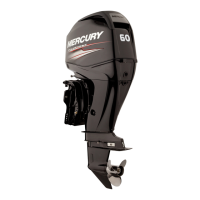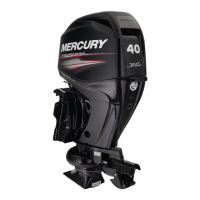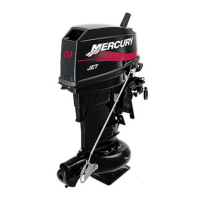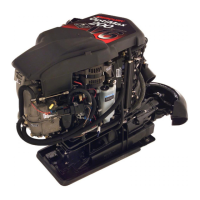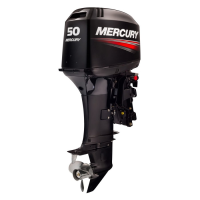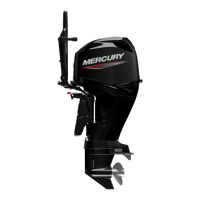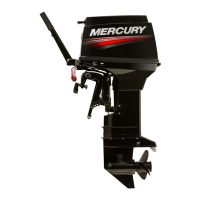OPERATION
29
Pre-Starting Check List
• Operator knows safe navigation, boating, and operating procedures.
• An approved personal flotation device of suitable size for each person aboard and readily accessible (it is
the law).
• A ring type life buoy or buoyant cushion designed to be thrown to a person in the water.
• Know your boats maximum load capacity. Look at the boat capacity plate.
• Fuel supply OK.
• Oil supply (oil injection) OK.
• Ensure the boat drain plug is installed.
• Arrange passengers and load in the boat so the weight is distributed evenly and everyone is seated in a
proper seat.
• Tell someone where you are going and when you expect to return.
• It is illegal to operate a boat while under the influence of alcohol or drugs.
• Know the waters and area you will be boating; tides, currents, sand bars, rocks, and other hazards.
• Make inspection checks listed in Maintenance - Inspection and Maintenance Schedule.
• Check steering for free operation.
• Check for debris around the rudder and reverse gate which may jam or hinder operation.
• Before launching, examine the jet drive water intake for obstructions which may prevent pumping of water.
• Ensure the driveshaft bearing on the jet drive is lubricated.
Operating In Freezing Temperatures
If there is a chance of ice forming on the water, the jet drive should be removed and drained completely of water.
If ice should form at the water level inside the outboard driveshaft housing, it will block water flow to the engine
causing possible damage. Do not start the engine until the ice is clear.
Operating In Salt Water Or Polluted Water
If the boat is kept moored in the water, always tilt the outboard so the water intake is completely out of water (except
in freezing temperatures) when not in use.
Wash down the outboard exterior and flush out the exhaust outlet of the jet drive with fresh water after each use.
Each month, spray Mercury Precision or Quicksilver Corrosion Guard on external metal surfaces.
NOTE: Do not spray on corrosion control anodes as this will reduce the effectiveness of the anodes.
Operating at High Elevations
IMPORTANT: To prevent serious damage to the engine caused by a lean fuel mixture, do not operate the outboard
(if the jets were changed for high elevation) at a lower elevation unless the jets are changed again to correspond
to the new elevation.
Operating the outboard at an elevation higher than 762 m (2500 ft.) above sea level may require a carburetor jet
change. Consult your dealer. This will reduce the normal performance loss experienced as a result of reduced
oxygen in the air causing an overly rich fuel mixture.
Operating In Shallow Water
The life of the impeller and water intake can be greatly increased by avoiding the intake of sand and gravel. The
intake suction will act like a dredge when the water intake comes close to the bottom. It is better to stop the engine
and drift up to shore when landing, and to shove off with an oar when leaving. The engine can idle through areas
of water less than 61 cm (2 ft.) deep, but there should be more than 61 cm (2 ft.) of water under the boat when
increasing speed to reach full plane.
Once the boat is on plane, the boat speed will prevent the ingestion of gravel and other debris from the bottom.
The suction is still present, but the water intake passes too quickly over the bottom to allow debris to be drawn into
the water intake.
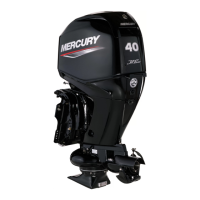
